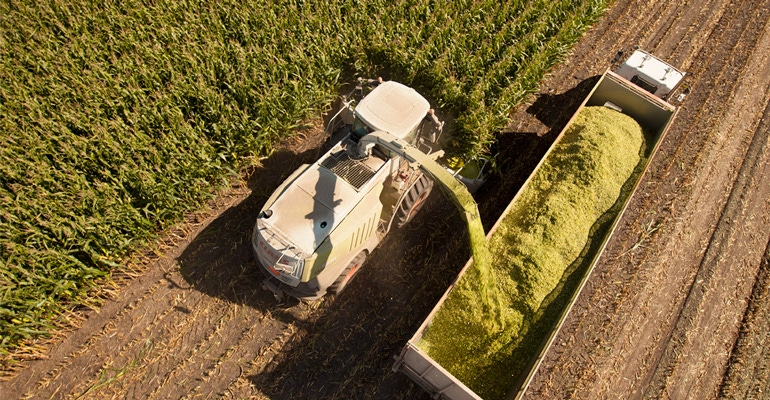September 28, 2020

The dry weather has left a shorter corn silage in some areas, but late rains have produced a higher percentage of grain in the silage that pollenated.
First and foremost, use caution when dealing with sorghum, sorghum sudan or sudangrass. The widespread dry conditions, coupled with shots of rain, are perfect for setting sorghum (and corn) up for high nitrates in the forage. Farmers get worried about prussic acid in their sorghum silage, but properly harvested and fermented there is little prussic acid risk.
In my 44 years I have only heard of one instance — grazing — where this occurred.
Nearly every year someone, somewhere kills a bunch of animals from excessive nitrates in the forage, not just sorghum species. The good news is that fermentation will often drop those nitrate levels in half. This droughty year might be a good time to test before you feed.
As the rush of harvest slows, there are a couple of steps you can take to ensure a better start next spring:
Fall-kill your sod. The first thing, and this is often forgotten by many farmers, is to not plow sod fields for corn. A fall-killed sod makes spring no-till planting the earliest corn you can get in the ground. The already decaying sod is a dream to plant in as the soil is usually the consistency of potting soil.
Issues such as hard surface are nonexistent. Problems such as armyworm and slugs have gone to some other fields more to their liking. Herbicides applied in fall are translocated to the roots where they kill the next year’s regrowth points over the winter.
Spraying sods rotating to corn between Oct. 1 and Oct. 15 (this is for Albany, so please adjust for your climatic region) when there is at least 6 inches of vegetation catches most tough perennials when they are translocating into their root systems for winter storage. This brings the herbicide to the deep root systems where it does the most good.
Milkweed, dandelions and other perennials can be rampant in fields that are not fall-killed. We have consistently gotten excellent results with 0.75 of glyphosate and a quart of 2,4-D. The vegetation slowly breaks down in winter, so I have found little to no erosion the next spring. The ground warms much faster with the excess residue decayed over winter.
In the spring, farms then no-till their corn directly into the mellow soil. There are almost no problems with penetration. The big advantage, though, is that you can successfully no-till without wasting time, fuel and a pile of money on tilling the ground during one of the busiest times of the season.
Do a soil test. The other step you can take after corn silage harvest is to comprehensively soil-test your fields. You pour a tremendous amount of money into fertilizer, seed, spray, tillage and time, and many farms do this blind; they are guessing the fertility status of the field and blindly hope for optimum production. \
On a 150-cow farm that I worked with, they soil-tested all their fields every other year for six years. They saved 35% on their fertilizer bill without skimping on any fertilizer needs. And not only did they save money on fertilizer, they had better crops from higher response to the fertilizer that matched that field’s needs.
Assuring correct pH level means more of the fertilizer is available to the crop. Without soil testing, many farms are severely handicapped in profit from low pH.
Fields of 5.4-5.8 are common, especially on rented ground. But at these pH levels you are throwing away a third of your fertilizer impact. Even at pH 6.0 nearly 20% — 1 ton in 5 — is lost due to the acid soil’s effect on availability.
In this era of tight margins, you should correct the pH first and then add what fertilizer the checkbook will allow you. The adage, “If you have a dollar to spend, spend it on lime” still holds true today.
There is a common perception that the lime needs make alfalfa growing an expensive proposition. Soil will decrease in pH as acid rain and any crop removes calcium and magnesium. It takes the same amount of lime to maintain pH regardless of the crop; it just means the balance point is different. High lime means that you are making up for what you didn’t do before.
Kilcer is a certified crop adviser in Kinderhook, N.Y.
About the Author(s)
You May Also Like




